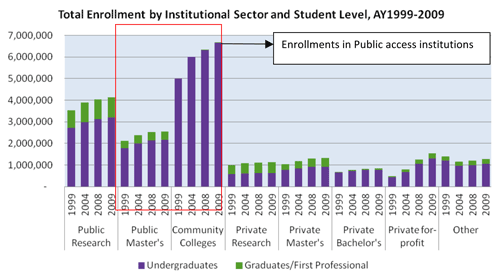The focus in this paper is on the finances of public access institutions – the public community colleges and masters’ institutions that collectively enroll about half of all students in US postsecondary institutions, including the majority of low income and working adults. Although the non-selective public institutions serve a declining share of total student enrollments (as private for-profit institutional enrollments have climbed) in the last decade these institutions have increased enrollments by two million students - a faster rate of growth than in the entire 1979-1999 period. Clearly, their success in maintaining access and in translating that to degrees or high value credentials is essential to the national agenda for increased attainment.

The paper will synthesize highlights from extant research to focus on the places most likely to be critical to current and future capacity for access and degree/credential completion. The nature of the topic requires this to be a scatter-shot presentation of snippets from several sources. Those already familiar with the research can fast-forward to the summary and conclusion, where recurring themes are highlighted, and recommendations presented for near-term action and additional policy research.